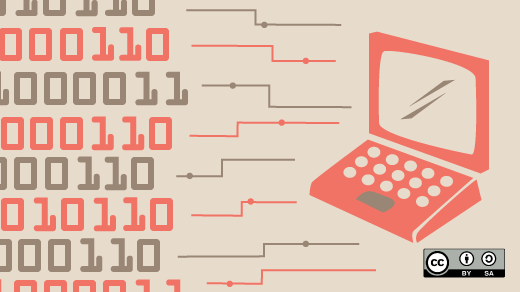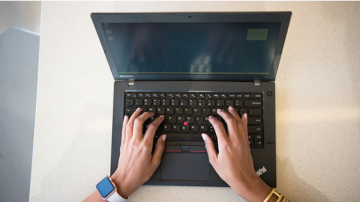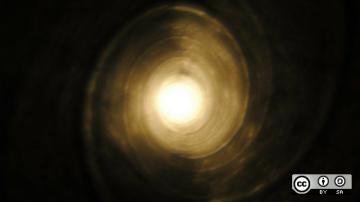In 1994, my family bought a Macintosh Performa 475 as a home computer. I had used Macintosh SE computers in school and learned to type with Mavis Beacon Teaches Typing, so I've been a Mac user for well over 25 years. Back in the mid-1990s, I was attracted to its ease of use. It didn't start with a DOS command prompt; it opened to a friendly desktop. It was playful. And even though there was a lot less software for Macintosh than PCs, I thought the Mac ecosystem was better, just on the strength of KidPix and Hypercard, which I still think of as the unsurpassed, most intuitive creative stack.
Even so, I still had the feeling that Mac was an underdog compared to Windows. I remember thinking the company could disappear one day. Flash-forward decades later, and Apple is a behemoth, a trillion-dollar company. But as it evolved, it changed significantly. Some changes have been for the better, such as better stabilization, simpler hardware choices, increased security, and more accessibility options. Other changes annoyed me—not all at once, but slowly. Most significantly, I am annoyed by Apple's closed ecosystem—the difficulty of accessing photos without iPhoto; the necessity of using iTunes; and the enforced bundling of the Apple store ecosystem even when I don't want to use it.
Over time, I found myself working largely in the terminal. I used iTerm2 and the Homebrew package manager. I couldn't get all my Linux software to work, but much of it did. I thought I had the best of both worlds: the macOS graphical operating system and user interface alongside the ability to jump into a quick terminal session.
Later, I began using Raspberry Pi computers booting Raspbian. I also collected a number of very old laptops rescued from the trash at universities, so, by necessity, I decided to try out various Linux distros. While none of them became my main machine, I started to really enjoy using Linux. I began to consider what it would be like to try running a Linux distro as my daily driver, but I thought the Macbook's comfort and ease, especially the hardware's size and weight, would be hard to find in a non-Mac laptop.
Time to make the switch?
About two years ago, I began using a Dell for work. It was a larger laptop with an integrated GPU, and dual-booted Linux and Windows. I used it for game development, 3D modeling, some machine learning, and basic programming in C# and Java. I considered making it my primary machine, but I loved the portability of my Macbook Air, and continued to use that as well.
Last fall, I started to notice my Air was running hot, and the fan was coming on more often. My primary machine was starting to show its age. For years, I used the Mac's terminal to access Darwin's Unix-like operating system, and I was spending more and more time bouncing between the terminal and my web browser. Was it time to make the switch?
I began exploring the possibilities for a Macbook-like Linux laptop. After doing some research, reading reviews and message boards, I went with the long-celebrated Dell XPS 13 Developer Edition 7390, opting for the 10th Generation i7. I chose it because I love the feel of the Macbook (and especially the slim Macbook Air), and reviews of the XPS 13 suggested it seemed it was similar, with really positive reviews of the trackpad and keyboard.
Most importantly, it came loaded with Ubuntu. While it's easy enough to get a PC, wipe it, and install a new Linux distro, I was attracted to the cohesive operating system and hardware, but one that allowed a lot of the customization we know and love in Linux. So when there was a sale, I took the plunge and purchased it.
What it's like to run Linux daily
I've been using the XPS 13 for three months and my dual-booted Linux work laptop for two years. At first, I thought I'd want to spend more time finding an alternate desktop environment or window manager that was more Mac-like, such as Enlightenment. I tried several, but I have to say, I like the simplicity of running GNOME out of the box. For one thing, it's minimal; there's not much GUI to get caught up in. In fact, it's intuitive and the overview takes only a couple minutes to read.
I can access my applications through the application dash bar or a grid button to get to the application view. To access my file system, I click on the Files icon in the dash. To open the GNOME terminal, I type Ctrl+Alt+T or just Alt+Tab to switch between an open application and an open terminal. It's also easy to define your own custom hotkey shortcuts.
Beyond this, there's not much else to say. Unlike the Mac's desktop, there's not a lot to get lost in, which means there's less to distract me from my work or the applications I want to run. I didn't realize all the options or how much time I spent navigating windows on my Mac. In Linux, there are just files, applications, and the terminal.
I installed the i3 tiling window manager to do a test run. I had a few issues configuring it because I type in Dvorak, and i3 doesn't adapt to the alternate keyboard configuration. I think with more effort, I could figure out a new keyboard mapping in i3, but the main thing I was looking for was simple tiling.
I looked up GNOME's tiling capabilities and was pleasantly surprised. You press the Super key (for me, it's the key with the Windows logo—which I should cover with a sticker!) and then a modifier key. For example, pressing Super+Left moves your current window to a tile on the left side of the screen. Super+Right moves to the right half. Super+Up maximizes the current window. Super+Down reverts to the previous size. You can move between app windows with Alt+Tab. This is all default behavior and can be customized in the Keyboard settings.
Plugging in headphones or connecting to HDMI works the way you expect. Sometimes, I open the Sound settings to switch between the HDMI sound output or my external audio cable, just as I would on a Mac or PC. The trackpad is responsive, and I haven't noticed any difference from the Macbook's. When I plug in a three-button mouse, it works instantly, even with my Bluetooth mouse and keyboard.
Software
I installed Atom, VLC, Keybase, Brave Browser, Krita, Blender, and Thunderbird in a matter of minutes. I installed other software with the Apt package manager in the terminal (as normal), which offers many more packages than the Homebrew package manager for macOS.
Music
I have a variety of options for listening to music. I use Spotify and PyRadio to stream music. Rhythmbox is installed by default on Ubuntu; the simple music player launches instantly and without any bloat. Simply click on the menu, choose Add Music, and navigate to a directory of audio tracks (it searches recursively). You can also stream podcasts or online radio easily.
Text and PDFs
I tend to write in Markdown in Neovim with some plugins, then convert my document using Pandoc to whatever final format is needed. For a nice Markdown editor with preview, I downloaded Ghostwriter, a minimal-focus writing application.
If someone sends me a Microsoft Word document, I can open it using the default LibreOffice Writer application.
Occasionally, I have to sign a document. This is easy with macOS's Preview application and my signature in PNG format, and I needed a Linux equivalent. I found that the default PDF viewer app didn't have the annotation tools I needed. The LibreOffice Draw program was acceptable but not particularly easy to use, and it occasionally crashed. Based on some research, I installed Xournal, which has the simple annotation tools I need to add dates, text, and my signature and is fairly comparable to Mac's Preview app. It works exactly as needed.
Importing images from my phone
I have an iPhone. To get my images off the phone, there are a number of methods to sync and access your files. If you have a different phone, your process may be different. Here's my method:
- Install gvfs-backends with sudo apt install gvfs-backends, which is part of the GNOME virtual filesystem.
- Get your phone's serial number. Plug your phone into your computer and click "Trust" on your iPhone. In your computer's terminal enter:
-
lsusb -v 2> /dev/null | grep -e "Apple Inc" -A 2(Thanks to Stack Oveflow user complistic for this code tip).
- Now open your File system.
- Press Ctrl+L to open a location and type in:
afc://YOUR_SERIAL_NUMBERto open and navigate to your DCIM folder. My photos and videos are inside the DCIM folder inside five subfolders, not the Photos folder. From here you can move them over to your computer manually.
- After mounting the phone file system you can alternatively navigate to your files in the Terminal via:
cd /run/user/1001/gvfs/afc:host=YOUR_SERIAL_NUMBER
- Press Ctrl+L to open a location and type in:
Graphics, photographs, modeling, and game engines
I am an educator and teach a variety of new media courses. Many of my colleagues and students subscribe to the pricey and proprietary Adobe Creative Suite. I like to let my students know they have other options.
For drawing and graphics editing, I use Krita. It's definitely my Photoshop replacement. For illustration work, there is also Inkscape and Scribus for publishing software. For automated editing, I use the command line ImageMagick program, which is pre-installed in Ubuntu.
To manage my images, I use the simple Shotwell application.
For 3D modeling, I use and teach the open source Blender software. At my school, we teach Unity 3d, which has Linux builds. It works fine, but I've been meaning to try out Godot, an open source alternative.
Development
My XPS 13 came with Chrome and Chromium installed. I also added Firefox and Brave Browser. All work as you'd be used to on a Mac or PC. Most of the time, I do my development work in Atom and sometimes in Visual Studio Code, both of which are easily installed on Linux. Vim is pre-installed in the terminal, and Neovim, my preferred terminal text editor, was an easy install.
After a few weeks, I began to try out other terminals. My current favorite is Terminology from the Enlightenment Foundation. For one, it allows you to view images in the terminal, something you'd be hard-pressed to do in Mac's terminal.
Here to stay
I can't see myself switching back to a Mac as my daily computer. Now when I use a Mac, I notice the abundance of options and extra steps needed to run an application or navigate somewhere. I also notice it runs a bit slower, or is that just in my head?
Now that I've made the switch to an open source ecosystem and Linux, I'm happy and have no need to switch back.










46 Comments